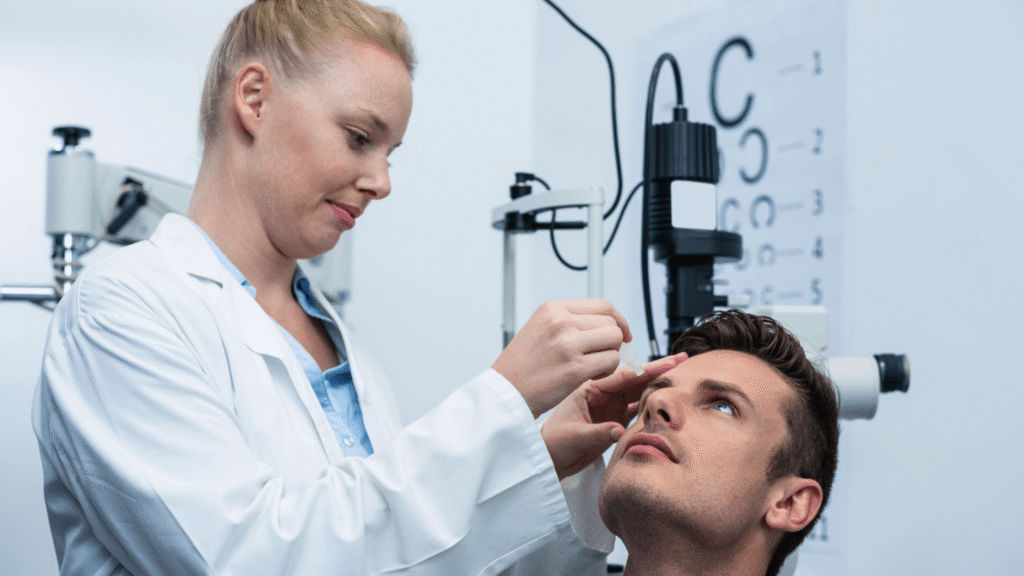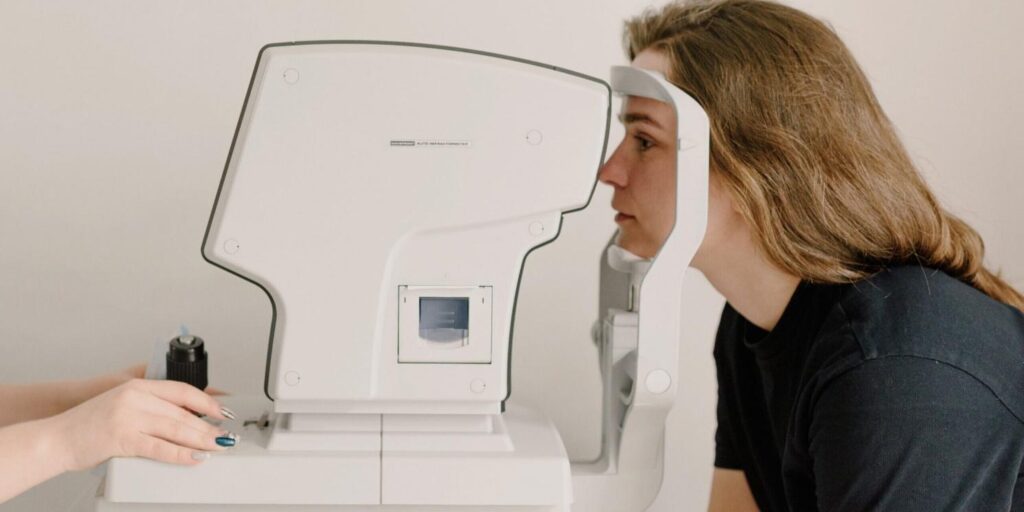
Your Health Magazine
4201 Northview Drive
Suite #102
Bowie, MD 20716
301-805-6805

More Vision & Eye Care Articles
How Medical Screening Devices for Vision Perform Excellent Eyesight Testing

Our lives heavily depend on clear vision yet we frequently fail to appreciate how essential eyesight really is until we encounter vision problems.
Several healthcare technological advancements through medical screening devices have transformed the procedures used to test vision. Medical screening devices enable quick precise minimally invasive tests which identify vision problems in early stages and maintain eye health throughout time.
Proficiency measurements paired with flashlights were formerly the main components of eye tests until recent advancements took over this industry.
Current screening devices from Depisteo help optometrists and ophthalmologists maintain high accuracy in their examinations to detect issues during stages of development without symptoms. This article investigates medical devices that screen vision using their operational methods along with their efficiency parameters while explaining their influence on future vision healthcare.
The Role of Medical Screening Devices in Modern Eye Exams

Specialized equipment used for medical vision tests serves as instruments which detect analyze monitor the health and functional condition of eyes. Medical screening devices supply eye professionals with both medical prescriptions and comprehensive information regarding optic elements and functional aspects of eye structures.
Due to their automatic systems and digital imaging capability these devices both prevent medical mistakes and accelerate testing periods and create precise data for advanced eye examinations. These devices now enable accurate detection of glaucoma symptoms and retinal scans and refractive error measurements with precise accuracy which used to be impossible. Discover more here https://www.scmp.com/lifestyle/health-wellness/article/3295083/what-amd-eye-condition-could-cause-blindness-and-only-eye-test-can-detect-it.
How These Devices Perform Excellent Eyesight Testing
Here’s what you need to know:
Accurate Measurement of Refractive Errors
One of the core components of any eyesight test is identifying refractive errors such as nearsightedness (myopia), farsightedness (hyperopia), astigmatism, or presbyopia. Medical screening devices like the autorefractor or wavefront aberrometer are used to measure how light is bent as it enters the eye.
These tools provide instant and precise calculations of a person’s prescription, allowing for a much faster diagnosis compared to traditional trial-and-error lens testing. This is especially helpful for children, seniors, or individuals who may have trouble expressing how well they can see.
Digital Retinal Imaging
Digital retinal cameras and fundus photography allow eye care providers to capture detailed images of the retina, optic nerve, and blood vessels at the back of the eye. These high-resolution images help detect a wide range of vision-threatening conditions like diabetic retinopathy, macular degeneration, and retinal detachment.
What makes this approach so effective is that it allows for baseline comparisons over time. If a patient returns for follow-up care, the doctor can compare past and present images to assess changes and adjust treatment plans accordingly.
Optical Coherence Tomography (OCT)
OCT is one of the most advanced imaging technologies in modern eye care. It uses light waves to create cross-sectional images of the retina, revealing layers of eye tissue in microscopic detail. This technology is crucial in detecting conditions like glaucoma, macular edema, and optic nerve damage—often long before symptoms appear.
Because it’s non-invasive and incredibly accurate, OCT is used regularly in both routine and specialized eye exams. It helps ensure early detection, which can slow or prevent the progression of serious eye diseases.
Visual Field Testing
For diagnosing conditions that affect peripheral vision, such as glaucoma or neurological issues, automated visual field testing devices are invaluable. These tools measure how far and how clearly a person can see across their entire visual field, not just what’s directly in front of them.
Medical screening devices provide quantitative results, showing exactly where vision loss has occurred. This helps eye doctors identify patterns of damage and take steps to preserve what remains of the patient’s sight.
Photoscreeners and Pediatric Vision Testing
Children can’t always articulate when they’re having trouble seeing. This is where photoscreeners and handheld pediatric vision screeners come in. These portable devices can screen a child’s eyes in just seconds, detecting problems like strabismus (crossed eyes), amblyopia (lazy eye), and refractive errors early on.
These tools are especially useful in schools, pediatric offices, and community screenings, where large numbers of children can be tested quickly and referred for further care if needed.
Advantages of Using Medical Screening Devices for Vision
An eye test that used to take 30 minutes can now be done in a lot less time with these tools. This means that more patients can be seen, and people who need care right away can be found more quickly.
Medical screening devices give consistent, high-accuracy results by getting rid of guesswork and human interpretation. This makes sure that treatment plans are based on sound evidence and lowers the chance of making the wrong diagnosis.
A lot of eye diseases progress slowly and painlessly, so it’s important to catch them early. With more improved screening tools, problems can be found early, often before they show any symptoms. If you act quickly, you can improve the result and keep your vision from going away for good. Read more on this page.
More and more, portable screening devices are being used in rural or underserved areas to give people who might not normally be able to get eye care access to professional-level eye exams. Some devices can even connect to telemedicine platforms, which lets doctors look at the data from afar.
Other Articles You May Find of Interest...
- What Causes Cloudy Eyes and How to Improve Your Vision?
- Is Your Vision at Risk? Discover the Importance of the AMD Eye Test
- Cataract Surgery Cost: What Patients in Bihar Should Know
- Effective Solutions for Eye Irritation Relief
- How to Effectively Treat a Hordeolum Externum and Get Rid of Styes
- Effective Solutions for Managing Macular Degeneration Treatments
- Prescription for Contacts Vs. Glasses: Are They the Same?














